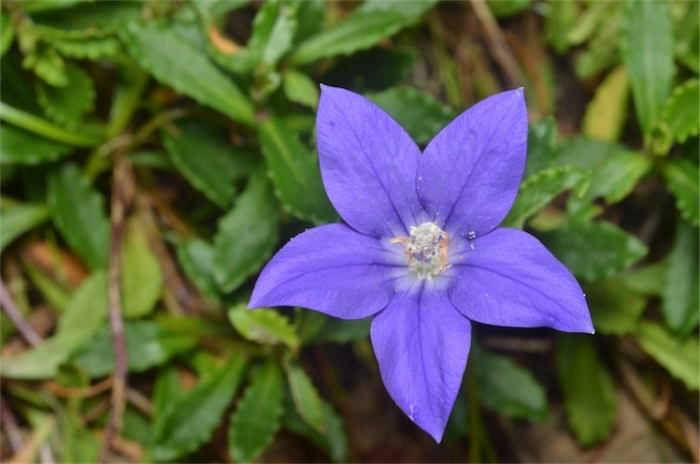Royal Bluebell
(Wahlenbergia gloriosa)
Royal Bluebell (Wahlenbergia gloriosa)
/
/

Murray Fagg
CC BY 3.0 au
Image By:
Murray Fagg
Recorded By:
Copyright:
CC BY 3.0 au
Copyright Notice:
Photo by: Murray Fagg | License Type: CC BY 3.0 au | License URL: https://creativecommons.org/licenses/by/3.0/au/deed.en | Uploader: Gderrin | Publisher: Wikimedia Commons | Title: Wahlenbergia_gloriosa.jpg | Notes: |




Estimated Native Range
Summary
Wahlenbergia gloriosa, commonly known as Royal Bluebell, is a perennial herb native to the alpine and sub-alpine regions of southeastern Australia, including the Australian Capital Territory, where it is the floral emblem. It thrives in moist meadows, grassy slopes, and open forest clearings. The plant typically grows 6–40 cm (0.24–1.6 in) high and features a basal rosette of egg-shaped leaves, with more linear leaves higher on the erect, mostly unbranched stems. The Royal Bluebell is renowned for its striking, solitary purple flowers with a tube-shaped base, which bloom in spring and are quite showy, attracting pollinators such as bees. Following the flowering period, it produces a glabrous, cone-shaped capsule as fruit.
The Royal Bluebell is valued for its vibrant blue-purple flowers and its use as a frost-hardy ground cover. It is suitable for rockeries, borders, and underplanting in cooler parts of Australia. While it prefers moist conditions, it is important to avoid waterlogged soil. The plant benefits from enriched soil with well-rotted organic matter. It is relatively easy to propagate by division, cuttings, or seed. Gardeners should provide it with full sun to part shade and ensure medium to fast soil drainage. Despite its delicate appearance, it is relatively hardy but may suffer from root rot if overwatered.CC BY-SA 4.0
The Royal Bluebell is valued for its vibrant blue-purple flowers and its use as a frost-hardy ground cover. It is suitable for rockeries, borders, and underplanting in cooler parts of Australia. While it prefers moist conditions, it is important to avoid waterlogged soil. The plant benefits from enriched soil with well-rotted organic matter. It is relatively easy to propagate by division, cuttings, or seed. Gardeners should provide it with full sun to part shade and ensure medium to fast soil drainage. Despite its delicate appearance, it is relatively hardy but may suffer from root rot if overwatered.CC BY-SA 4.0
Plant Description
- Plant Type: Herb
- Height: 0.5-1 feet
- Width: 0.25-0.5 feet
- Growth Rate: Moderate
- Flower Color: Blue, Purple
- Flowering Season: Summer, Fall
- Leaf Retention: Evergreen
Growth Requirements
- Sun: Full Sun, Part Shade
- Water: High
- Drainage: Medium, Fast
Common Uses
Drought Tolerant, Low Maintenance, Potted Plant, Rock Garden, Showy Flowers
Natural Habitat
Native to alpine and sub-alpine regions, moist meadows, grassy slopes, and open forest clearings in southeastern Australia
Other Names
Common Names:
Scientific Names: , Wahlenbergia gloriosa,
GBIF Accepted Name: Wahlenbergia gloriosa Lothian